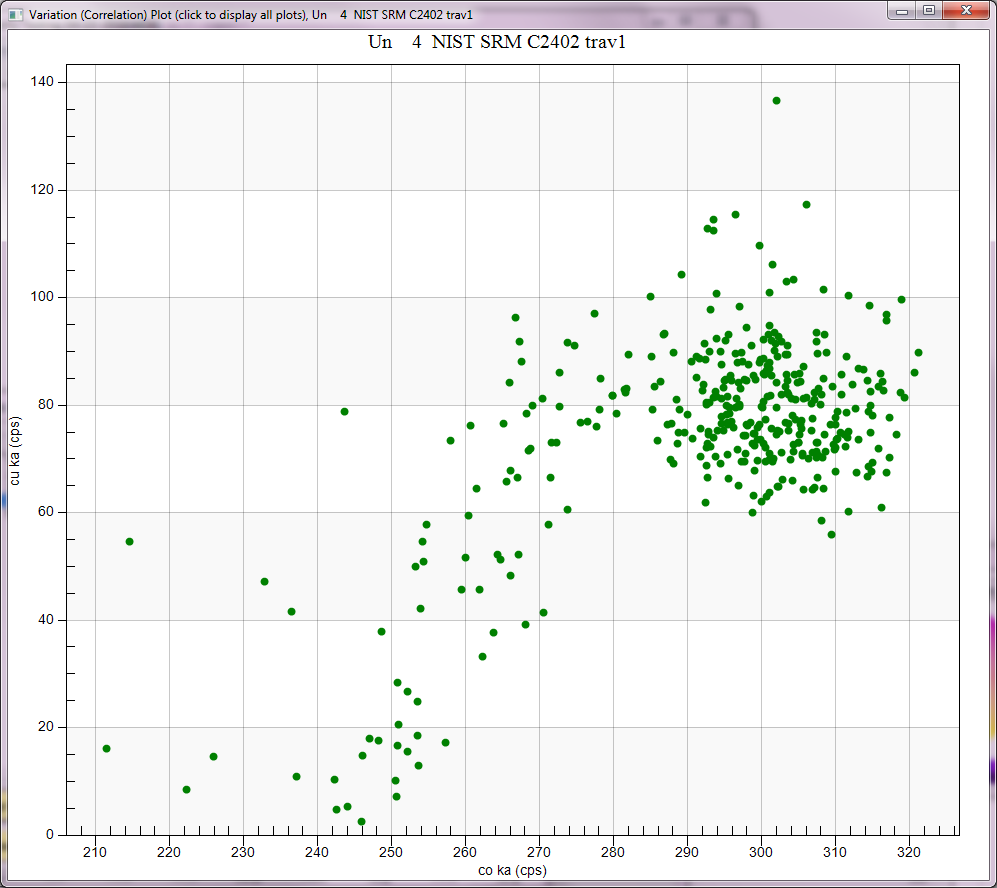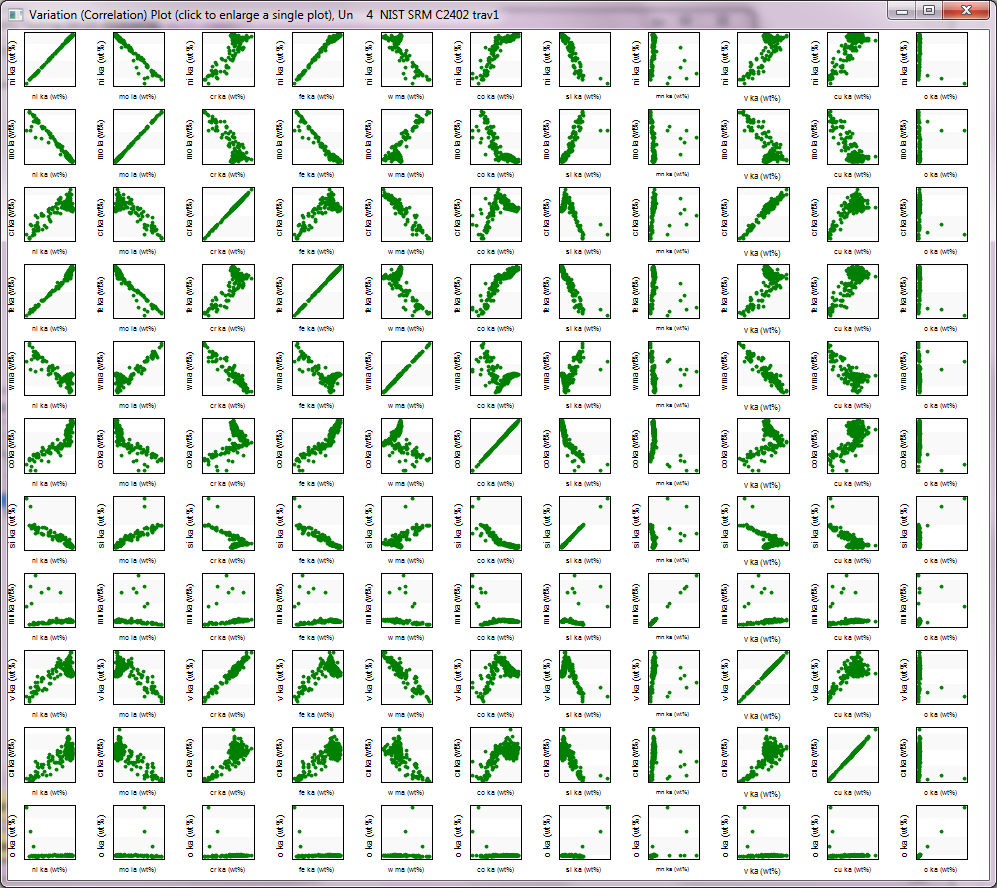In getting ready to implement a variation (correlation) plot method for quantitative x-ray maps in CalcImage, we decided to move the variation plot method in Evaluate over to Probe for EPMA and tweak it a bit. The idea being that in PFE it will plot quant points, and in CalcImage it will plot quant pixels.
The new menu in Probe for EPMA is here under the Output menu:

Then you'll see a window with a list of samples and two options. The first to just plot the raw (deadtime, beam drift and off-peak background corrected) element intensities as seen here:

and note that if you click on a single graph, it will expand as seen here:

And second, to plot the actual element concentrations (corrected for matrix, interference, TDI effects, etc., etc.) as seen here:

this again can be expanded by clicking, to contemplate the quantitative element correlations in detail:

You can also display the individual analysis numbers for each data point:

This is ready to download now in v. 12.5.7 from the Probe for EPMA Help | Update Probe for EPMA menu.